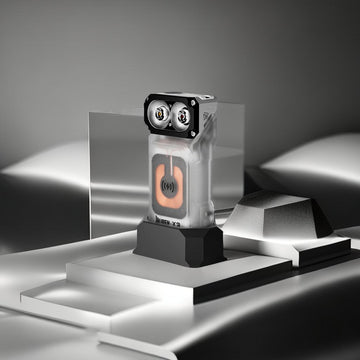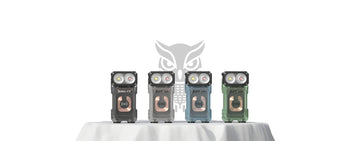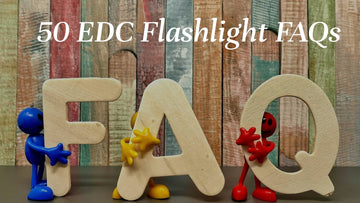
In the realm of lighting, precise measurement of light is essential for understanding and comparing different sources of illumination. Two commonly encountered units of measurement are candlepower and lumens. In this article, we will explore the concepts of candlepower and lumens, with a specific focus on converting candlepower to lumens.
Candlepower provides valuable information about the intensity of light in a specific direction, making it useful for applications that require focused illumination or directional lighting effects. Understanding candlepower allows lighting professionals to assess the performance and characteristics of different light sources.
Lumens play a crucial role in lighting technology as they allow for accurate comparisons between different light sources. By measuring the total light output in lumens, manufacturers can provide consumers with information about the brightness of their products, enabling individuals to make informed decisions when selecting lighting solutions.
Lumens = Candlepower x (Solid Angle / 2π)
The solid angle is typically measured in steradians, a unit that represents the extent of the surface of a sphere covered by a given angle.
To illustrate the conversion process, let's consider an example:
Suppose we have a light source with a candlepower rating of 5000, and it emits light uniformly in all directions. We want to determine the equivalent light output in lumens.
To convert candlepower to lumens, we need to know the solid angle over which the light is emitted. In this case, since the light is emitted uniformly in all directions, the solid angle is 4π steradians (the entire surface of a sphere).
Using the conversion formula:
Lumens = 5000 x (4π / 2π)
Lumens = 5000 x 2
Lumens = 10,000
Therefore, a light source with a candlepower rating of 5000 is equivalent to an output of 10,000 lumens.
Significance and Practical Applications
The conversion from candlepower to lumens is significant because it allows for easy comparison between different types of light sources. By converting the intensity of light in a specific direction to the total light output in lumens, individuals can assess the overall brightness of a light source and make informed decisions when selecting lighting solutions.
This conversion is particularly useful for lighting professionals, architects, and designers who need to ensure adequate illumination in various applications. It helps in selecting appropriate light sources and fixtures to meet specific brightness requirements.
In conclusion, candlepower and lumens are two important units of measurement in the field of lighting. While candlepower measures the intensity of light emitted in a specific direction, lumens provide a comprehensive measure of the total light output. Converting candlepower to lumens allows for easy comparison and assessment of the overall brightness of different light sources. By understanding the concepts of candlepower and lumens and their conversion, individuals can make informed decisions when it comes to lighting design, selection, and achieving desired lighting effects.
Related article: Lumen to Candlepower
Candlepower
Candlepower is a unit of measurement used to quantify the intensity of light emitted in a specific direction from a light source. It measures the concentration and brightness of light within a given solid angle. Historically, candlepower was defined as the amount of light emitted by a standard candle. However, with advancements in lighting technology, candlepower is now typically measured using more precise instruments.Candlepower provides valuable information about the intensity of light in a specific direction, making it useful for applications that require focused illumination or directional lighting effects. Understanding candlepower allows lighting professionals to assess the performance and characteristics of different light sources.
Lumens
Lumens, on the other hand, are a unit of measurement that quantifies the total amount of visible light emitted by a light source. Unlike candlepower, which focuses on intensity and directionality, lumens provide an objective measure of the overall brightness of a light source. Lumens take into account the entire spectrum of light as perceived by the human eye.Lumens play a crucial role in lighting technology as they allow for accurate comparisons between different light sources. By measuring the total light output in lumens, manufacturers can provide consumers with information about the brightness of their products, enabling individuals to make informed decisions when selecting lighting solutions.
Converting Candlepower to Lumens
Converting candlepower to lumens requires a specific formula that takes into account the solid angle over which the light is emitted. The formula is as follows:Lumens = Candlepower x (Solid Angle / 2π)
The solid angle is typically measured in steradians, a unit that represents the extent of the surface of a sphere covered by a given angle.
To illustrate the conversion process, let's consider an example:
Suppose we have a light source with a candlepower rating of 5000, and it emits light uniformly in all directions. We want to determine the equivalent light output in lumens.
To convert candlepower to lumens, we need to know the solid angle over which the light is emitted. In this case, since the light is emitted uniformly in all directions, the solid angle is 4π steradians (the entire surface of a sphere).
Using the conversion formula:
Lumens = 5000 x (4π / 2π)
Lumens = 5000 x 2
Lumens = 10,000
Therefore, a light source with a candlepower rating of 5000 is equivalent to an output of 10,000 lumens.
Significance and Practical Applications
The conversion from candlepower to lumens is significant because it allows for easy comparison between different types of light sources. By converting the intensity of light in a specific direction to the total light output in lumens, individuals can assess the overall brightness of a light source and make informed decisions when selecting lighting solutions.
This conversion is particularly useful for lighting professionals, architects, and designers who need to ensure adequate illumination in various applications. It helps in selecting appropriate light sources and fixtures to meet specific brightness requirements.
In conclusion, candlepower and lumens are two important units of measurement in the field of lighting. While candlepower measures the intensity of light emitted in a specific direction, lumens provide a comprehensive measure of the total light output. Converting candlepower to lumens allows for easy comparison and assessment of the overall brightness of different light sources. By understanding the concepts of candlepower and lumens and their conversion, individuals can make informed decisions when it comes to lighting design, selection, and achieving desired lighting effects.
Related article: Lumen to Candlepower
Tags:
Related Articles




